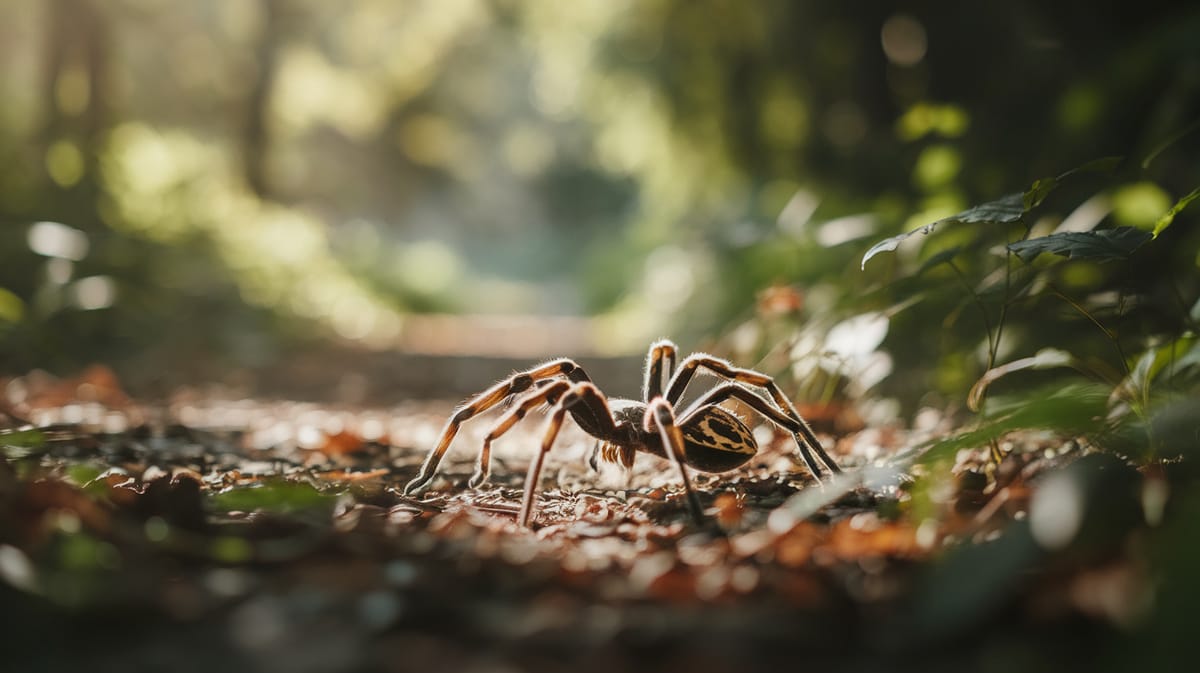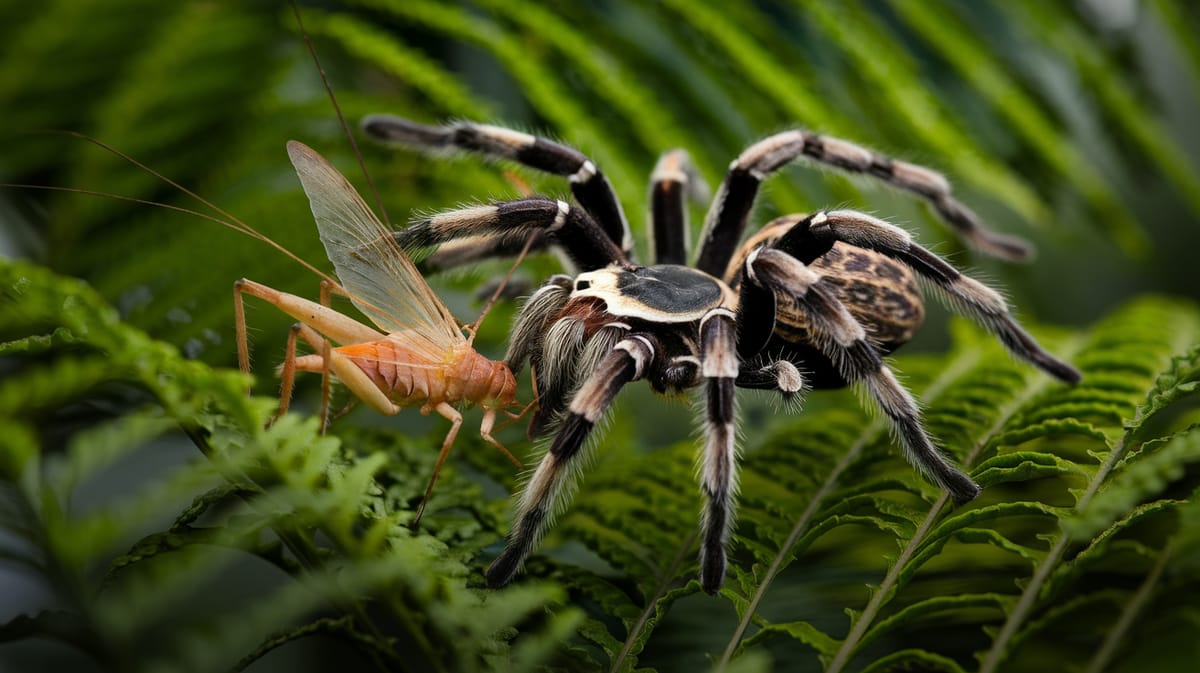Tarantula
Fearsome yet fascinating, the Tarantula captivates with its sheer size and hairy appearance, playing a vital role in controlling insect populations. Skilled hunters, they ambush prey using stealth and venom.

Key Insights at a Glance
Did You Know?
Taxonomy & Classification
Tarantulas, known for their imposing size and hairy bodies, are adept predators with venomous fangs. Their specialized adaptations highlight a fascinating evolutionary path among arachnids. Let's understand the evolutionary journey and classification of these remarkable predators.
Global Presence
Over 1,000 species of tarantulas span diverse habitats worldwide, from arid deserts to lush rainforests, showcasing their adaptability.
Ancient Survivors
Originating around 100 million years ago, tarantulas have survived major extinction events, evolving unique traits like urticating hairs for defense.
Lifecycle and Growth
A remarkable journey of transformation from Egg to Adult.
Egg
Tarantula eggs develop within a silk cocoon, providing warmth and protection until they hatch into spiderlings.
Juvenile
Juvenile tarantulas undergo several molts, each shedding allows growth and development of their exoskeleton and features.
Adult
Adult tarantulas reach full size, develop reproductive organs, and establish territories for hunting and mating.
Dietary Habits
A stealthy ambush predator, it primarily consumes insects, small vertebrates, and occasionally exploits diverse prey opportunities.
| DIET TYPE | DESCRIPTION |
|---|---|
| Primary Diet | Relies on insects like crickets, beetles, and grasshoppers, using stealth and speed to capture prey. |
| Secondary Diet | Occasionally preys on small vertebrates, including frogs, lizards, or even snakes, when readily available. |
| Occasional | Rarely targets small birds and rodents, demonstrating adaptability in varied hunting scenarios. |

Behaviour and Adaptations
Discover the fascinating traits that make the Tarantula a unique and formidable insect.
Nocturnal Hunting
Skilled in nighttime predation, they rely on vibrations to locate prey.
Hair Defense
Uses urticating hairs as a deterrent against predators.
Silk Utilization
Produces silk to line burrows and create egg sacs.
Ecosystem Impact
Tarantulas play a crucial role in maintaining ecological balance through their unique contributions.
Natural Pest Control
Tarantulas help regulate insect populations by preying on pests.
Soil Aeration
Their burrowing activity promotes soil health and nutrient cycling.
Biodiversity Support
Tarantulas provide food for predators, supporting diverse ecosystems.
Conservation Challenges
Understanding and addressing the significant threats to Tarantula populations.
Habitat Destruction
Urban sprawl and agriculture reduce tarantula habitats, leading to population declines.
Illegal Pet Trade
Overharvesting for the pet trade disrupts wild tarantula populations.
Climate Change
Altered weather patterns impact tarantula survival and reproduction.
Frequently Asked Questions
How long do Tarantula live?
Tarantulas can live for a considerable time. Females generally live between 15 to 30 years, while males have a shorter lifespan, typically around 5 to 10 years.
What do Tarantula eat?
Tarantulas primarily eat insects, but larger species may prey on small rodents, birds, or lizards. They are opportunistic feeders, capturing prey with their powerful jaws.
Are Tarantula poisonous?
Tarantulas are not considered dangerous to humans. While their venom is toxic to their prey, it usually causes only mild irritation or allergic reactions in humans.
Are Tarantula endangered?
Most tarantula species are not endangered, though habitat loss and the pet trade have impacted some populations. Certain species may be protected or listed under conservation statuses to prevent further decline.
What do Tarantula symbolize?
In various cultures, tarantulas symbolize patience, creativity, and resourcefulness. They are often seen as a sign of protection due to their methodical hunting and weaving skills.
Do Tarantula bite?
Tarantulas can bite, but they usually only do so when threatened. Their bites are not typically dangerous to humans, though they may cause pain, swelling, or mild allergic reactions.
What color are Tarantula?
Tarantulas come in a range of colors, from brown and black to more vibrant shades like blue, green, and red, depending on the species. Their coloration often serves as camouflage in their natural habitat.
Does a Tarantula have wings?
No, tarantulas do not have wings. They are ground-dwelling arachnids that rely on their legs to move and capture prey.
What does a Tarantula look like?
Tarantulas are large, hairy spiders with eight legs and two body segments. They have fangs and spinnerets at the rear for web production. Their size and color vary by species.
Is a Tarantula an insect?
No, a tarantula is not an insect. It is an arachnid, a class of joint-legged invertebrates that also includes spiders, scorpions, and ticks. Arachnids have eight legs, while insects have six.
Related Insects
Discover insects with similar characteristics to Tarantula - including shared habitats, diets, and taxonomic classifications
Share this profile
Help others discover Tarantula
